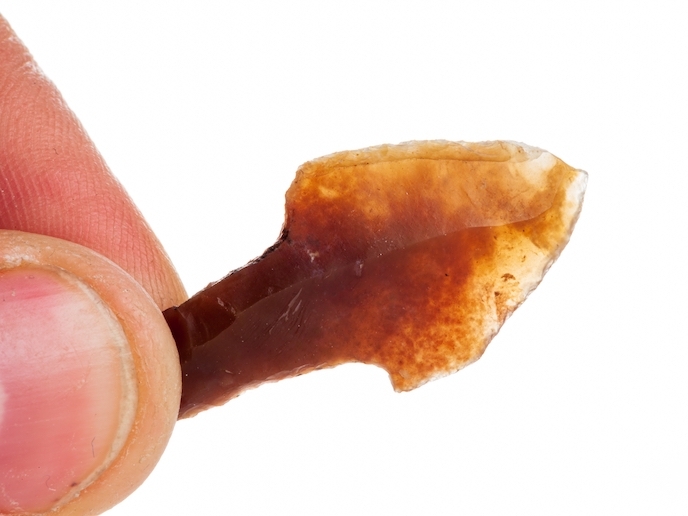What Neanderthal weapons can tell us about the past
Identifying the origin and widespread use of projectiles, one of the most significant technological innovations in human evolution, remains a key challenge for Palaeolithic archaeologists. Reconstructions of early weapons enable us to assess not only past hunting strategies, but also the technical and cognitive capacities of Palaeolithic hominins. “In this framework, the appearance of stone-tipped spears has been described as a tipping point in human evolution, facilitating an important advancement in prey acquisition through distance hunting,” explains TIP-N-POINT project coordinator Karen Ruebens from the Max Planck Institute for Evolutionary Anthropology in Germany.
Data-driven approaches
While there have been claims that Neanderthal people developed projectile technologies, the appearance and spread of such weapons remains a point of contention. Neanderthals, who occupied large parts of Europe and western Asia from around 300 000 to 40 000 years ago, were known to be skilled hunters, thanks in part to isotopic analyses. This however is not equally reflected in the tools they left behind. Preserved remains of organic spears are sparse, and potential lithic weapon tips are not ubiquitously present during this time period. The TIP-N-POINT project, which was undertaken with the support of the Marie Skłodowska-Curie Actions programme, sought to bridge this knowledge gap by taking a more data-driven approach to Neanderthal hunting, at the level of weapon assemblage. For this, Ruebens travelled to the Neanderthal sites of Abri du Maras in southeast France, to record a range of metrics from lithic relics. “We looked at a range of attributes that could be indicative of projectile construction and use, including tip damage, thinning to facilitate hafting – attaching a stone to a handle – and edge damage distributions, to name just a few,” she adds. Ruebens found that attributes indicative of hafting were rare, while edges of stone artefacts were found to be most damaged towards the centre. “It still remains a challenge to assign tip breakage specifically to hunting impact,” she says. However, striking differences across two different assemblage sites were found. In one, pointed flints had been retouched around the edges. In the other, the points had been used without further modification. Further analysis, including collagen fingerprinting and radiocarbon dating, revealed that the retouched points were associated with a diverse range of animals.
Understanding our past
Ruebens believes that the project’s data-driven approach to stone tool assembly could lead to further discoveries about our distant relatives. And such insights into Neanderthal behaviour could be crucial for understanding our own evolution. “Differences in hunting strategies could have been one of the reasons why modern humans successfully spread across the world,” notes Ruebens. “An improvement in hunting strategy, e.g. throwing spears, the use of spear throwers or even bow and arrow technology, would have facilitated a diversity in diet.” And how Neanderthals hunted could help to explain how behavioural differences might have played a role in the replacement of Neanderthals by modern humans. Identifying regional differences in Neanderthal behaviour might also help us understand how they responded to the arrival of modern humans into Europe around 45 000 years ago. “At a broader regional scale, it is clear that hunting with stone-tipped spears was not practised by all Neanderthal groups,” says Ruebens. “Understanding the reasons behind the presence or absence of lithic weapon tips remains a major challenge in Neanderthal archaeology.”
Keywords
TIP-N-POINT, Palaeolithic, archaeologists, Neanderthals, weapon, flints, lithic, archaeology

